[Know Tungsten] Pure Tungsten
- Details
- Category: Tungsten Information
- Published on Wednesday, 19 April 2017 15:57
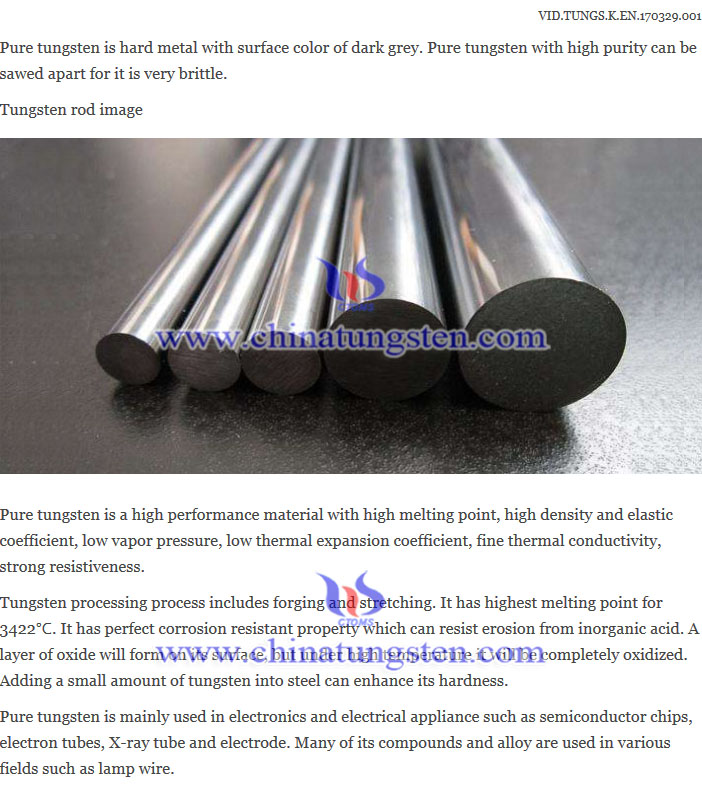
Tungsten Metals Supplier: Chinatungsten Online www.tungsten.com.cn
Tel.: 86 592 5129696; Fax: 86 592 5129797;Email:sales@chinatungsten.com
Tungsten News & Prices, 3G Version: http://3g.chinatungsten.com
Molybdenum News & Molybdenum Price: http://news.molybdenum.com.cn
Tungsten Carbide Groove Cutter
- Details
- Category: Tungsten Information
- Published on Friday, 24 March 2017 16:39
Tungsten carbide groove cutter has high cutting accuracy and longer service life, which often used in manufacturing run-out groove in bearing parts, over-run of grinding wheel, snap ring groove and sealing groove and bore groove.
Types
There are many types of cutting groove, such as run-out groove in bearing parts, over-run of grinding wheel, snap ring groove and sealing groove and bore groove and so on. Lathe grooving cut divided into the outer tank, inner hole and the end face grooving. The tool can be used to cut the outer groove of turning face groove. Cut the outer groove and the end slot are rectangular arbor, and cut the groove commonly round or square arbor. In addition, the combined size of the blade and arbor must be less than the hole diameter to ensure the accuracy and improve the efficiency.
Characteristic
1. Small feed rate, even cutting thickness, large unit cutting force, better heat dissipation performance;
2. High cutting speed and uniform distribution;
3. The workpiece rotating and the tool cut continuously and form Archimedes screw surface;
4. Narrow edge width, suspended elongation, so it easily to vibrate when cutting or grooving.
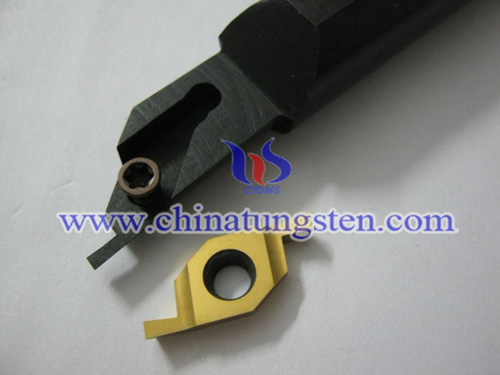
| Tungsten Carbide Supplier: Chinatungsten Online tungsten-carbide.com.cn | Tel.: 86 592 5129696; Fax: 86 592 5129797;Email:sales@chinatungsten.com |
| Tungsten News&Tungsten Prices, 3G Version: http://3g.chinatungsten.com | Molybdenum News & Molybdenum Price: http://news.molybdenum.com.cn |
Tungsten Carbide Casting Die
- Details
- Category: Tungsten Information
- Published on Friday, 24 March 2017 16:36
Tungsten carbide casting die has better performance in heat resistance and fatigue resistance, which make casting component obtain good structure and mechanical properties by the extrusion of the molds. There are many types of tungsten carbide casting die mainly based on the manufacturing equipment, such as tire mold, hammer forging die, mechanical forging die, upset forging die and roll forging die, etc.
Tire mold: Used in free forging, is suitable for small forging parts and small batch production;
Hammer forging die: Under dynamic action of forging equipment, the blank forced plastic flow forming die in the die bore, resulting in higher quality than free forging;
Mechanical forging die: Mechanical presses for the forging blank or semi-finished molding;
Upset forging die: In the horizontal forging machine forging the blank is formed into a mold or semi-finished products.
Compared with casting process, metal after forging can improve its organizational structure and mechanical properties. Since the deformation of the metal and recrystallization, the original coarse dendrite and columnar grains become finer grain, recrystallized structure of uniform size. In addition, to ensure the continuity of the metal forging fibrous tissue, fibrous tissue and make forging shape consistent metal flow lines intact, to ensure parts with good mechanical properties and long service life with precision forging; cold extrusion, warm extrusion process to produce forgings, castings are unmatched by forging metal was pressured by the shape or suitable plastic deformation of the compression force required to shape objects.
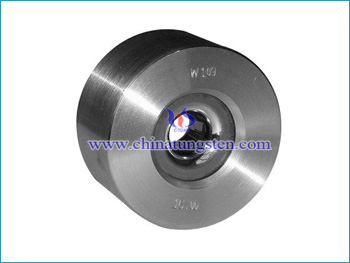
| Tungsten Carbide Supplier: Chinatungsten Online tungsten-carbide.com.cn | Tel.: 86 592 5129696; Fax: 86 592 5129797;Email:sales@chinatungsten.com |
| Tungsten News&Tungsten Prices, 3G Version: http://3g.chinatungsten.com | Molybdenum News & Molybdenum Price: http://news.molybdenum.com.cn |
Tungsten Carbide Forming Cutter
- Details
- Category: Tungsten Information
- Published on Friday, 24 March 2017 16:33
Tungsten carbide forming cutter designed according to the outline of the workpiece. Using tungsten carbide forming cutter can process the complex surface on common miller, and obtain higher accuracy and high surface quality, which can be used in machining straight groove and spiral groove. According to the process of tooth back, forming cutter can be divided into tines forming cutter and shovel forming cutter.
Tines forming cutter: It has high surface quality, high durability and suitable for mass production.
Shovel forming cutter: By turning tool shovel out in curve, and has simple sharpening process.
In addition, according to different applications, forming cutter can be divided into twist groove cutter, tap groove cutter, spline groove cutter, thread milling, disc-shaped gear cutter, and cutter wrench.
Advantages
1. Any axial cross-sectional shape is consistent, when sharpening only to ensure the rake face of the cutting edge can make the axial plane shape remain the same;;
2. Simple grinding process, can regrinding repeatedly;
3. After regrinding the chip space is large, it is not prone to clogging;
4. High precision, high surface quality, the productivity is relatively high.
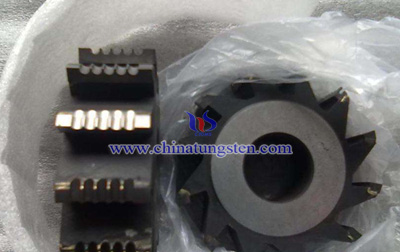
| Tungsten Carbide Supplier: Chinatungsten Online tungsten-carbide.com.cn | Tel.: 86 592 5129696; Fax: 86 592 5129797;Email:sales@chinatungsten.com |
| Tungsten News&Tungsten Prices, 3G Version: http://3g.chinatungsten.com | Molybdenum News & Molybdenum Price: http://news.molybdenum.com.cn |
Tungsten Carbide Corrugated Mill
- Details
- Category: Tungsten Information
- Published on Friday, 24 March 2017 16:28
Tungsten carbide corrugated mill has high hardness, cutting efficiency, good chip removal performance, which is suitable for stainless steel, aluminum, tool steel, carbon steel, alloy steel, cast iron, iron milling process. And it has many advantages, such as:
1. High accuracy, good stability;
2. Good fineness, not easily to be broken and longer service life;
3. High efficiency, one-step forming of drilling and milling;
4. Tiny crumbs, not prone to stick the knife and wrapped the knife.
Grinding Process
1. Check the mill diameter, choose the proper chuck and lock the mill on the sleeve;
2. The cutter sleeve slightly tilted 4 ° (bevel cutter bottom surface between 2 ° -6 °);
3. Grinding the bottom surface, for example, 4-blade cutter align wheel, and then after the completion of the grinding step knife cutter angled bottom surface. After grinding a blade edge then replace another grinding;
4. Clearance angle grinding center and side blade knife with a spiral groove cutter against the top, align wheel, push the sleeve cutter grinding corrugated side edge.
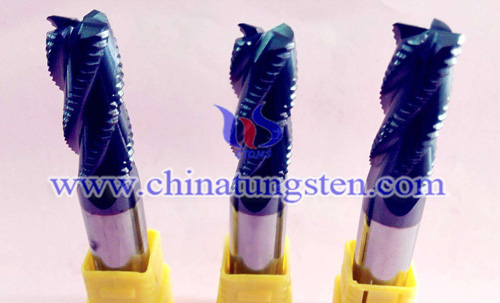
| Tungsten Carbide Supplier: Chinatungsten Online tungsten-carbide.com.cn | Tel.: 86 592 5129696; Fax: 86 592 5129797;Email:sales@chinatungsten.com |
| Tungsten News&Tungsten Prices, 3G Version: http://3g.chinatungsten.com | Molybdenum News & Molybdenum Price: http://news.molybdenum.com.cn |
Tungsten Copper FGM Laminated Method
- Details
- Category: Tungsten Information
- Published on Wednesday, 22 March 2017 16:02
Tungsten copper FGM (Functionally Graded Material) has many processes, mainly include PM (Powder Metallurgy), plasma spraying, vapor deposition and SHS (Self-propagation High-temperature Synthesis). PM has the advantages of simple equipment, low cost, easy to realize large-scale production, etc., but it needs strict control of holding temperature, holding time and cooling rate and it is only suitable for the products with simple structure and dimensions.
According to different processes, PM (Powder Metallurgy) can be divided into laminated sintering, spray deposition. Laminated sintering filled in a layer by layer according to raw material powder or a thin film of different components uniformly mixed in different mixing ratios so that the components are distributed in gradient and sintered. This method has been successfully used by researchers in China for preparing SiC / C, ZrO2 / NiCeSi3N4 / SUS and ZrO2 / SUS multi-functional gradient materials.
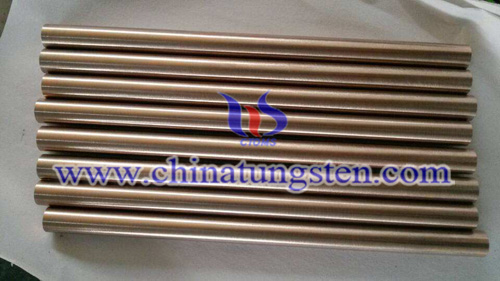
| Tungsten Copper Supplier: Chinatungsten Online tungsten-copper.com | Tel.: 86 592 5129696; Fax: 86 592 5129797;Email:sales@chinatungsten.com |
| Tungsten News & Prices, 3G Version: http://3g.chinatungsten.com | Molybdenum News & Molybdenum Price: http://news.molybdenum.com.cn |
Tungsten Copper Specific Structure Method
- Details
- Category: Tungsten Information
- Published on Wednesday, 22 March 2017 15:59
Tungsten copper specific structure is also called as fixed structure, which is beneficial for improving tungsten copper performance and design the special component according to the condition. The current use of more hollow type tungsten copper electrical contacts, has low ablation and long service life.
Application
1. Gradient structure tungsten copper: One end is the high tungsten low copper, the other end is the high copper low tungsten, the middle is the gradient change transitional layer;
2. Nano structure tungsten copper: Ultra-fine tungsten-copper composite powder with high homogeneity distribution can be obtained by mixing metal tungsten powder and copper powder by high-energy ball milling for long time grinding;
3. Deformation processing tungsten copper: Cold rolling deformation, and has middle annealing in deformation processing, extrusion, hot forging and cold forging;
4. Tungsten copper for vacuum: In order to meet the needs of vacuum switch, the development of a very low gas impurity tungsten copper alloy materials, using special high-temperature sintering, vacuum infiltration, vacuum degassing and other processes.
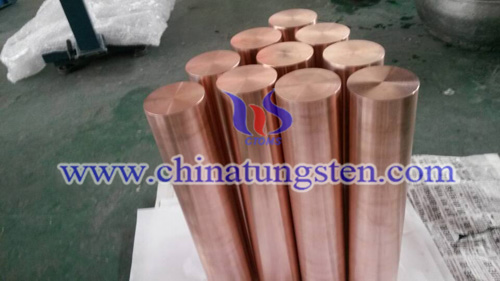
| Tungsten Copper Supplier: Chinatungsten Online tungsten-copper.com | Tel.: 86 592 5129696; Fax: 86 592 5129797;Email:sales@chinatungsten.com |
| Tungsten News & Prices, 3G Version: http://3g.chinatungsten.com | Molybdenum News & Molybdenum Price: http://news.molybdenum.com.cn |
Tungsten Copper Heat Sink Used for Microwave Component
- Details
- Category: Tungsten Information
- Published on Wednesday, 22 March 2017 15:56
Working in the microwave band (frequency 300 ~ 300000 MHz) of the device, known as microwave components. Microwave devices can be divided into microwave oscillators (microwave sources), power amplifiers, mixers, detectors, microwave antennas, microwave transmission lines according to their functions. Tungsten copper heat sink used for microwave component plays an important role in mechanical support and heat conductivity, which is one of the important parts of microwave system.
The microwave components can be divided into microwave electric vacuum devices, microwave semiconductor devices, microwave integrated circuits (solid state devices) and microwave power modules according to their working principle, materials and processes. Microwave electric vacuum devices include klystron, traveling wave tube, magnetron, back wave tube, gyrotron, virtual cathode oscillator, the use of electronic movement in the vacuum and interaction with the external circuit oscillation, amplification, mixing, etc. Microwave semiconductor devices including microwave transistors and microwave diodes, with a small size, light weight, low power consumption, etc., but in high-frequency, high-power case, can not completely replace the electrical vacuum devices. Microwave integrated circuit is a circuit with a microwave function of semiconductor technology in the gallium arsenide or other semiconductor material chip, the formation of functional blocks, has a broad application prospect in solid-state phased array radar, electronic countermeasures equipment, missile electronic equipment, microwave communications systems and ultra-high-speed computer.
Solid-state microwave power device combination of devices, with high efficiency, ease of use and other advantages of radar, communications, electronic warfare and other electronic equipment to achieve all-solid state is important. Tungsten copper heat sink for microwave oscillator (microwave source) is an important device in the microwave system is the heart of electronic equipment; its performance has a direct impact. For example, in a high power microwave weapon system, the high power microwave oscillator determines its killing efficiency; in a radar system, the microwave oscillator determines the radar's range. Microwave oscillator will develop further to high power, high efficiency, miniaturization, power consumption, low cost direction.
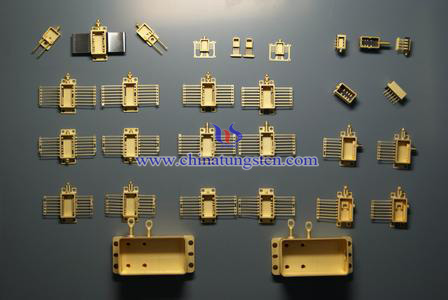
| Tungsten Copper Supplier: Chinatungsten Online tungsten-copper.com | Tel.: 86 592 5129696; Fax: 86 592 5129797;Email:sales@chinatungsten.com |
| Tungsten News & Prices, 3G Version: http://3g.chinatungsten.com | Molybdenum News & Molybdenum Price: http://news.molybdenum.com.cn |
Tungsten Copper Heat Sink Used for CPU
- Details
- Category: Tungsten Information
- Published on Wednesday, 22 March 2017 15:53
CPU will produce a lot of heat when it is working, if not timely disseminate the heat out, it is easy to lead to poor computer operation, or even burn the CPU. Tungsten copper heat sink used for CPU can cool it down and keep working stability.
According to the way of cooling, tungsten copper heat sink for CPU can be divided into three types of air cooling, heat pipe and water cooling.
Air cooling: The most common type of heat sink, including a cooling fan and a heat sink. The principle is the heat generated by the CPU to the heat sink, and then through the fan to take away;
Heat pipe: It is a heat transfer element with extremely high thermal conductivity, which transfers heat by evaporation and condensation of the liquid in a fully enclosed vacuum tube. Most of these fans for the "air-cooled + heat pipe", both air-cooled and heat pipe advantages, with high heat dissipation;
Water cooling: The liquid forced by pump and take away the heat of radiator, compared with air cooling, it is more stable and less dependence to the environment.
In terms of heat sink materials, each one has different thermal conductivity. According to the thermal conductivity of high to low is silver, copper, aluminum, and steel. However, the silver for the heat sink will be too expensive, the best solution for the use of copper. Although the aluminum is much cheaper, obviously is not as good thermal conductivity of copper and its alloys (only about 50% of copper). Commonly used heat sink material is copper alloy and aluminum alloy, both of them have advantages and disadvantages. Copper has better performance in thermal conductivity, but it has high cost, large in weight (Many copper heat sink have exceeded the CPU's weight limit), but easy to oxidize. And aluminum is not sufficient in hardness and not good as copper in thermal conductivity. Some radiators to take advantage of each other, in the aluminum radiator base embedded in a tungsten copper plate.
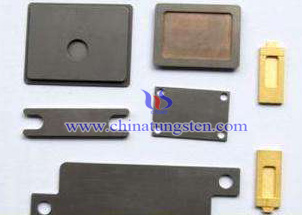
| Tungsten Copper Supplier: Chinatungsten Online tungsten-copper.com | Tel.: 86 592 5129696; Fax: 86 592 5129797;Email:sales@chinatungsten.com |
| Tungsten News & Prices, 3G Version: http://3g.chinatungsten.com | Molybdenum News & Molybdenum Price: http://news.molybdenum.com.cn |
Tungsten Copper Heat Sink for Plate Heat Exchanger
- Details
- Category: Tungsten Information
- Published on Wednesday, 22 March 2017 15:50
Tungsten copper heat sink for plate heat exchanger forms high-voltage circulating structure by vacuum welding of contact points. And the circulation structure makes the hot and cold fluid in the plate heat exchanger produce strong turbulence and achieves high heat transfer effect.
Characteristic
1. Tungsten copper heat sink for plate heat exchanger fabricated by special process, which has excellent hermeticity, moisture permeability and tear resistance;
2. Good temperature conductivity and is suitable for the area with large temperature difference and small wetness difference, save energy and long service life;
3. Tungsten copper heat sink can be high-temperature brazing or sealing bolt combination;
4. Compact structure can keep the stable operation under high temperature and high pressure.
There are some tungsten copper heat sink applications:
Refrigeration: used as a condenser and evaporator;
HVAC: with the use of the middle of the boiler heat exchanger, high-rise buildings, such as the middle heat exchanger;
Chemical industry: soda ash industry, synthetic ammonia, alcohol fermentation, resin synthesis cooling;
Mechanical and metallurgical industry: quenching liquid cooling, cooling oil reducer, heating or cooling aluminates mother liquor, steel-making process cooling;
Power industry: high-voltage transformer oil cooling, generator bearing oil cooling.
In addition, it also can be used in paper making, textile, food, medicine. ships, seawater desalination and geothermal utilization.
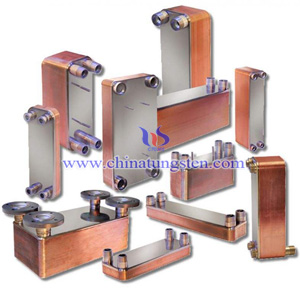
| Tungsten Copper Supplier: Chinatungsten Online tungsten-copper.com | Tel.: 86 592 5129696; Fax: 86 592 5129797;Email:sales@chinatungsten.com |
| Tungsten News & Prices, 3G Version: http://3g.chinatungsten.com | Molybdenum News & Molybdenum Price: http://news.molybdenum.com.cn |



 sales@chinatungsten.com
sales@chinatungsten.com